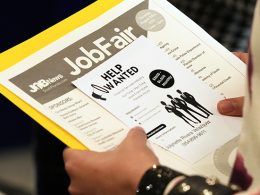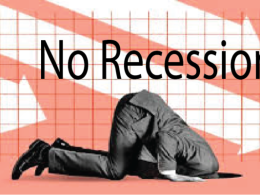by Emre Erdogan & Seth McMoore, Schwab Center for Financial Research
Our current 10-year outlook highlights better opportunities for cash and bonds, primarily driven by higher starting yields, and a steady outlook for stocks.
To guide investors, we diligently update our long-term Capital Market Expectations (CMEs) every year. This helps ensure we adapt to the ever-changing market environment and provide you with the most relevant projections. Schwab's long-term CMEs are quantitative forecasts designed to offer reasonable expectations for risks and returns over the next 10 years. These estimates are nominal, meaning they include inflation, annualized, meaning they are a yearly average rate of return, and calculated over a 10-year horizon, meaning they provide forecasts 10 years into the future. CMEs are created for representative benchmark indices rather than specific investment vehicles (like exchange-traded funds or mutual funds). As such, they do not account for the impact of fees or taxes. These forecasts play an essential role in a variety of decisions, such as determining optimal portfolio allocations and building realistic retirement plans.
Compared to last year, our outlook highlights better opportunities for cash and bonds, primarily driven by higher starting yields. Although support for stock valuations has diminished given the higher prices, the change in expected returns is tempered by an improved earnings growth outlook. The net result is a similar return outlook for stocks.
Given recent market changes, now may be an opportune time to reassess your long-term financial goals, confirming they are based on projections grounded in a disciplined methodology.
What is your outlook over the next decade?
Using data as of 10/31/2023, our latest estimates cover the period from 2024 to 2033
Historical and expected returns

Source: Charles Schwab Investment Advisory, Inc. and Schwab Asset Management. Historical data from Morningstar Direct. All data as of 10/31/2023.
Total return = price growth + dividend and interest income. Geometric returns account for the compounding nature of investment returns. The example does not reflect the effects of taxes or fees. Numbers rounded to the nearest one-tenth of a percentage point. Benchmark indexes: S&P 500® Total Return Index (U.S. Large-Company Stocks), Russell 2000® Total Return Index (U.S. Small-Company Stocks), MSCI EAFE Net Return Index® (International Large-Company Stocks), Bloomberg U.S. Aggregate Bond Total Return Index (U.S. Investment-Grade Bonds), and FTSE 3-Month U.S. Treasury Bill Index (Cash Equivalent). Historical U.S. investment-grade bond return calculation starts in 1/30/1976 due to lack of prior data. Past performance is no guarantee of future results.
When constructing our forecasts for inflation and real GDP growth over the next decade, we use a survey-based approach that considers the entire 10-year trajectory. This method accounts for near-term factors, such as heightened inflation and dampened GDP prospects, in our long-term estimate. While we are still confident in our approach, we do acknowledge increased uncertainty surrounding these estimates in the coming decade.
We expect inflation to remain elevated in the near-term as it gradually moderates toward the Fed's neutral rate. This outlook reflects our belief that central banks will succeed in reining in inflation. Nevertheless, we expect the average level of inflation to remain higher than the pre-pandemic era. This year, we are adjusting our 10-year inflation forecast for the U.S. from 2.5% to 2.3%. It is important to note that this adjustment doesn't signify a shift in our longer-term trend; rather, it's a recognition of a lower initial starting point. In other words, while inflation for 2023 still exceeds the target rate, this starting point is notably lower than the 6.5% experienced in 2022.
Due to interventions by the Fed aimed at curbing inflation, we expect a near-term economic slowdown as the impact of rate hikes catches up with robust demand. Despite these short-term disruptions, our expectation is for U.S. GDP growth to stabilize over time. As such, we have adjusted our real GDP expectations for U.S. from 1.8% to 1.7%, suggesting a less robust expansion compared to the prior decade.
Historical and expected inflation and real GDP growth
Source: Charles Schwab Investment Advisory, Inc. and Schwab Asset Management.
Historical inflation data from U.S. Bureau of Labor Statistics. Historical real gross domestic product (GDP) data from U.S. Bureau of Economic Analysis. Forecast data from Consensus Economics. All data as of 10/31/2023.
Numbers rounded to the nearest one-tenth of a percentage point. Annualized historical inflation based on monthly Consumer Price Index for All Urban Consumers. Annualized historical real GDP growth based on annual real GDP (Not Seasonally Adjusted). Real GDP (Not Seasonally Adjusted) as of 12/31/2023 estimated using forecast data from Consensus Economics. Past performance is no guarantee of future results.
Since the yield-to-maturity of a bond is closely tied to the annual rate of return an investor can expect if held to maturity (assuming all interest payments are reinvested at the same rate), these higher yields have resulted in a more favorable outlook for bonds, offering the most compelling expected returns in years. For instance, U.S. investment-grade bonds are expected to yield an annual return of 5.7% over the next decade, up from our 4.9% forecast last year. We expect bond returns to closely align with yield-to-maturity given the flatter-than-average curve.
Typically, investors seek a higher return when they invest in longer-term bonds as compensation for committing their funds and navigating through additional uncertainties, such as changing inflation and interest rates. This added compensation is commonly referred to as the "term" premium, and it can fluctuate based on various market factors. Recent developments, such as the Fed's commitment to a "higher-for-longer" stance, have introduced some upward pressure further along the yield curve. As such, we have seen the expected term premium continue to rise. This trend has resulted in an even greater improvement for our longer-term bond outlook when compared to last year.
Similar to bonds, cash-equivalent investments like Treasury bills have also benefited from these higher starting yields. Our cash forecasts are based on the expected evolution of the yield curve as rates adjust to a more normalized environment, falling between today's restrictive policy levels and the low interest rate regime of the past decade. Consequently, our cash rate forecast over the next 10 years has risen from 3.3% to 3.6%.
We continue to expect that cash and bond returns will outpace inflation, suggesting positive real returns (i.e., returns after accounting for inflation). This potential for a more attractive source of income marks a welcome shift from the trends of the last decade.
Stocks: Throughout 2023, the financial landscape experienced notable fluctuations driven by major market events, such as the regional banking crisis. Despite these difficulties, the S&P 500® is still up year-to-date. Typically, an increase in prices would mean lower expected returns due to a higher and less attractive starting valuation. However, the dynamics in the market go beyond just market prices. Stock valuations are also influenced by expected cash flows (e.g., dividends). Despite our long-term growth outlook staying subdued, there has been a positive shift in expected earnings growth compared to 2022. These factors feed into our valuation-based model, suggesting that any potential decline due to elevated stock prices has been counteracted by the improved earnings growth outlook.
The equity risk premium (ERP) is the additional return stocks provide over a "risk-free" investment, such as a Treasury security, as compensation for the heightened risk of stock investing. It acts as a yardstick for evaluating whether stocks are expensive or cheap compared to safer investments. This year, the expected ERP is less enticing compared to earlier decades, primarily attributable to higher bond yields. This means that while stocks are expected to have higher returns than bonds, the margin has narrowed. Additionally, when assessed on a risk-adjusted basis, bonds present an appealing option when compared to the more volatile nature of stocks.
Expected equity risk premium over time

Source: Charles Schwab Investment Advisory, Inc. and Schwab Asset Management. Historical data from Morningstar Direct. All data as of 10/31/2023.
Total return = price growth + dividend and interest income. The example does not reflect the effects of taxes or fees. Benchmark Indices: S&P 500® Total Return Index (U.S. Large-Company Stocks). U.S. 10-Year Treasury Constant-Maturity YTM. For illustrative purposes only. Past performance is no guarantee of future results.
How do you calculate your long-term forecasts?
Building block categories

Source: Charles Schwab Investment Advisory, Inc. and Schwab Asset Management. For illustrative purposes only.
For inflation and GDP growth, we use a survey-based approach based on economist expectations. We find this approach beneficial for several reasons: (1) professional forecasters incorporate new and relevant information into their updated expectations; (2) these expectations typically align with prevailing views on economic policy; and (3) this approach provides a relatively stable forecast, a desirable feature for retirement planning and asset allocation models.
For both U.S. and international large-company stocks, our starting point is the belief that stock markets function as a discounting mechanism. This means that the current stock price is an attempt to factor in all available information about present and future events. To achieve this, we use a valuation-based model that discounts the future cash flows an investor is expected to receive, such as dividends, to the current price of a stock.
The effectiveness of this approach relies on the inputs used. We use forward-looking earnings estimates and macroeconomic forecast data to estimate two key cash-flow drivers: (1) recurring income, such as dividends, and (2) capital gains resulting from selling the investment at the end of a predetermined horizon, such as 10 years. To arrive at a return estimate, we answer the question: "What returns would investors make if they bought a stock at the current price and received these projected cash flows?"
For U.S. small-company stocks, we build upon the valuation-based model used for large-company stocks as our baseline. We then analyze and incorporate a "size" risk premium, which is the return that investors in small-company stocks expect to earn over the returns on large-company stocks.
For U.S. investment-grade bonds (i.e., Treasuries, investment-grade corporate bonds, and securitized bonds), we believe that future returns are closely tied to yields. For example, if an investor buys a 10-year Treasury note with a 4% yield-to-maturity and holds the investment until maturity, then the investor can expect to realize a 4% return per year (assuming all interest payments are reinvested at the same rate). We consider the following components when forecasting bond returns:
- Yield-to-maturity of a "risk-free" bond. Treasury notes are fixed-income securities issued by the U.S. government known for generating what is considered a "risk-free" rate, primarily due to the negligible chance of default (though they still carry duration risk). Since the U.S. Treasury does not provide yields for every maturity, we use a yield curve fitting model to address this gap. This fitted Treasury curve provides duration-matched yields for any fixed income asset class that we need to model.
- Yield spread. Additional yield offered above the risk-free rate, compensating investors for credit and/or default risk. This risk reflects the possibility that the bond's issuer will be unable to pay its obligations on time, or at all. The credit risk premium increases with a lower credit rating, reflecting the heightened risk associated with owning the issuer's debt. In a perfect world, investors would receive the entire stated yield over the life of a bond, but due to potential default loss and downgrades, some bonds may only earn around 50% of the observed yield spread.
- Roll-down return. Since investors typically participate in the bond markets via indices designed to maintain an average duration, we factor in this additional return. To adhere to a target duration, these indices periodically rebalance their portfolios by selling bonds nearing maturity and buying longer-maturity bonds. Given the inverse relationship between bond yields and prices, this process often results in gains for an upward-sloping yield curve (where longer-term bonds have higher yields than shorter-term bonds). The opposite holds true for an inverted yield curve.
For cash investments, as they are inherently short-term in nature (typically no longer than three months), we assume reinvestment at the end of each period over a 10-year horizon. To forecast this rate, we use a model that factors in the term structure and the expected evolution of the yield curve over the next decade.
Why do you expect long-term returns to be lower than historical averages?
- Interest rates. While current and expected interest rates are notably higher than the past decade, they are still much lower than the high-interest-rate environment of the 1980s. Although the future path of interest rates is uncertain, we expect the average level of rates to be higher in the coming years than in the previous decade. While our estimates account for this higher-rate environment, we still do not believe interest rates will reach historical highs.
- Economic growth. Stubbornly high inflation has prompted central banks to continue tightening monetary policy, albeit in smaller increments compared to 2022. While economic growth has shown resilience to these interventions, we expect a near-term economic slowdown as the impact of rate hikes catches up with robust demand. Additionally, long-term consensus forecasts are still subdued compared to earlier decades. This affects our return outlook, as a robust economy is fundamental to achieving healthy returns in financial markets. According to consensus forecasts, economists expect average real GDP growth in the U.S. to be 1.7% over the next 10 years, notably lower than the historical average of 2.7% per year since 1970.
- Stock valuations. Despite an improved earnings growth outlook in the U.S., any potential attractiveness appears to be tempered by elevated stock prices. At their current levels, we would need to see stronger earnings growth to justify a higher return expectation. On the international front, although valuations appear more appealing, we continue to expect stock returns to fall below historical levels.
Why do you expect international stocks to outperform U.S. stocks?
While we expect stronger earnings growth from domestic stocks, international stocks present a compelling case with their lower valuations and higher dividend yield. It's worth noting that international stocks generally come with higher risk, and investors expect to be compensated for taking on this additional risk. Despite historical returns favoring domestic stocks, the current price given the expected cash flows suggest that international stocks have a better starting valuation and may outperform over the long-term.
What can investors do now?
If you don't have a long-term financial plan, now may be an opportune time to start putting one together. If you already have one, then consider revising it based on Schwab's updated outlook. Bear in mind that predicting the future of any individual investment with absolute certainty is impossible. Therefore, CMEs are not intended for market timing; instead, they should serve as a guide to set reasonable long-term expectations for financial goals and asset allocation plans.
Here are some considerations moving forward:
- Establish realistic financial goals. Create a financial plan based on your goals and be adaptable as your life circumstances change. Use our updated return outlook to help you be more realistic when creating your financial plan.
- Saving discipline. While expected returns have seen fluctuations this year, resist the urge to reduce your savings. Expected returns can vary year-to-year and are far from a guarantee. The more you save, the more cushion you have in case actual returns deviate from expectations.
- Diversification matters. Build a diversified portfolio based your risk tolerance. Various asset classes, like stocks, bonds, or cash, behave differently in changing market conditions. Predicting the best-performing asset class in a given year is challenging, so opt for diversification to mitigate the impact of market volatility rather than chasing past performance.












